Introduction to the Bengal cat breed
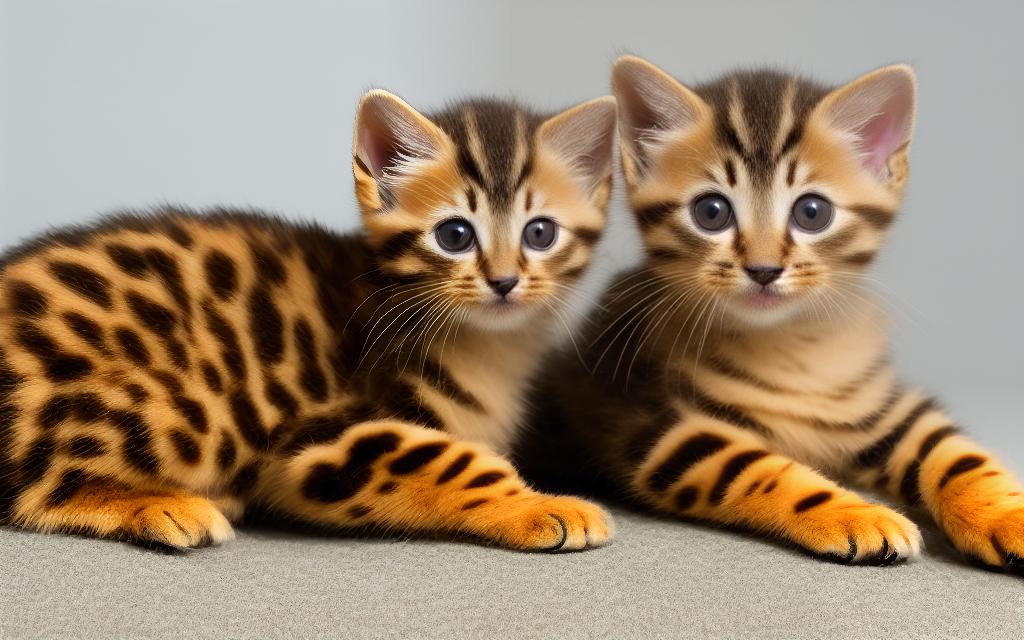
The Bengal cat breed has gained popularity for its wild and exotic appearance. Known for their distinctive coat that resembles that of a leopard or a tiger, Bengals are eye-catching and unique. But there is more to this breed than just their striking looks.
Bengals are a relatively new breed, with their origins tracing back to the 1960s. They were created by breeding domestic cats with Asian leopard cats, resulting in a cat with the same beautiful spotted markings as their wild ancestors. However, while Bengal cats may look wild, they are entirely domesticated and make excellent pets.
These cats have an active and playful nature, which makes them perfect for families or individuals who enjoy an interactive pet. They are intelligent creatures that love mental stimulation through toys and games, making them curious explorers of their surroundings.
Bengals also have a reputation for being affectionate towards their owners. Many will eagerly seek out attention and enjoy being petted and cuddled. However, due to their high energy levels and need for mental stimulation, they may not be ideal for all households.
When it comes to grooming, Bengals have a short yet dense coat that requires minimal care. Regular brushing can help prevent shedding and keep their fur healthy. Additionally, providing scratching posts can help satisfy their natural urge to scratch without damaging furniture.
Overall, the Bengal cat breed offers a charismatic blend of beauty, intelligence, and playfulness. Whether you're looking for an active companion or simply drawn to their wild-looking appearance, Bengals can make wonderful additions to the family.
History and origins of the Bengal breed
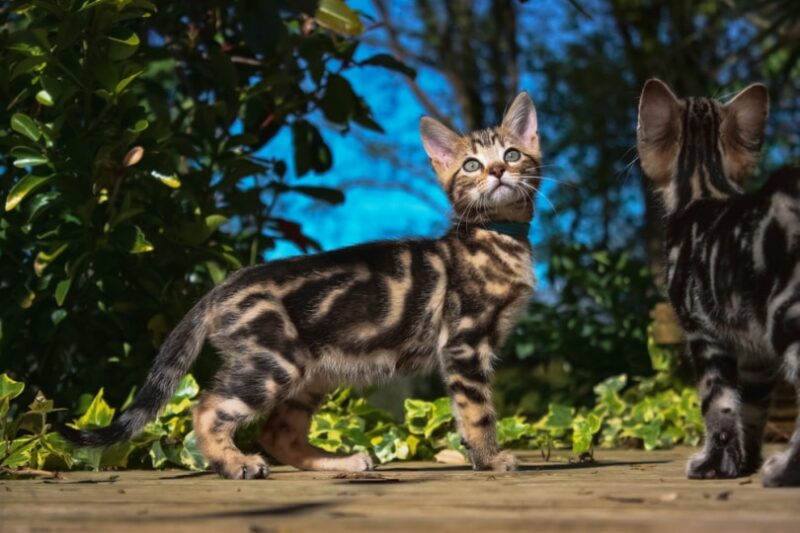
The Bengal breed of cats has a fascinating history that dates back to the 1960s. It all began when a breeder in California named Jean Mill had the idea of developing a domestic cat that resembled a leopard with distinctive spotted markings. She achieved this by crossing her Asian leopard cat with an American Shorthair, resulting in the first generation of Bengal cats.
It wasn't until the 1980s, however, that the Bengal breed started to gain recognition and popularity. The International Cat Association (TICA) officially recognized Bengals as a new breed in 1986. Since then, their popularity has continued to rise, and they are now one of the most sought-after breeds worldwide.
Bengal cats get their unique appearance from their ancestors, the Asian leopard cats, which are native to regions such as India and Southeast Asia. These wild cats have a coat pattern resembling that of leopards or tigers, and this is where Bengal cats acquire their striking spotted coats.
Through careful selective breeding over several generations, breeders have been successful in retaining the beautiful spots while also developing a friendly and sociable temperament in Bengals. This makes them great companion animals and suitable for families and individuals alike.
Today, Bengal cats are recognized for their wild-looking appearance combined with their domesticated behavior. They continue to capture the attention of cat enthusiasts around the world who appreciate their striking beauty and playful nature.
Physical characteristics of the Bengal cat
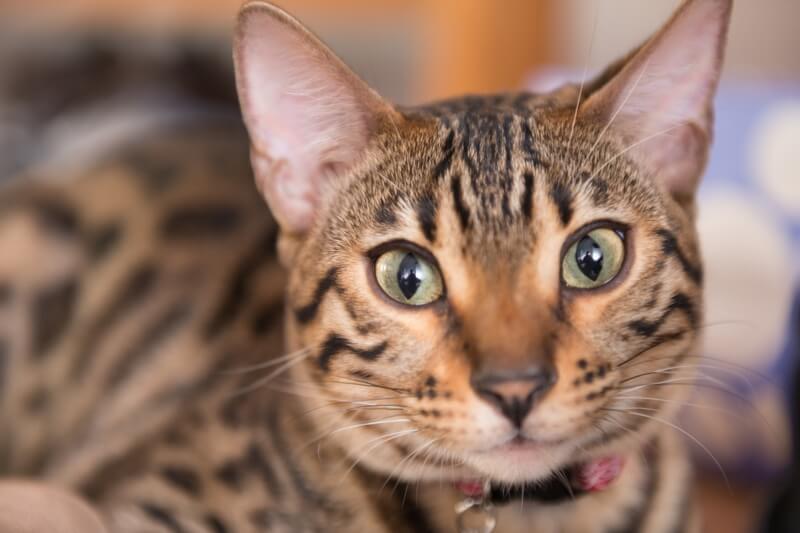
The Bengal cat is known for its exotic and wild-looking appearance. These cats have a muscular build and a medium to large size, typically weighing between 8 and 15 pounds. One of the most striking features of the Bengal is its coat, which comes in various patterns and colors, including spotted, marbled, or rosetted with shades of brown, gold, silver, or charcoal.
The Bengal's coat is short and dense, with a soft and luxurious feel to it. The spots on their fur are outlined in black or dark brown and can be either large or small, depending on the individual cat. The marble pattern resembles swirling patterns similar to that of a clouded leopard. This unique combination of markings gives the Bengal its distinctive appearance.
In addition to their beautiful coat, Bengals have large eyes that are usually green or gold in color. Their ears are relatively small and rounded at the tips. Another feature that sets Bengals apart is their muscular body structure with long legs and a broad chest. They have strong bones and are agile jumpers.
Overall, the physical characteristics of Bengal cats make them stand out from other domestic cat breeds. Their resemblance to their wild ancestors adds to their appeal for those looking for an exotic-looking companion. However, it's important to remember that despite their wild appearance, Bengals are fully domesticated cats with affectionate personalities.
Temperament and personality traits of Bengals
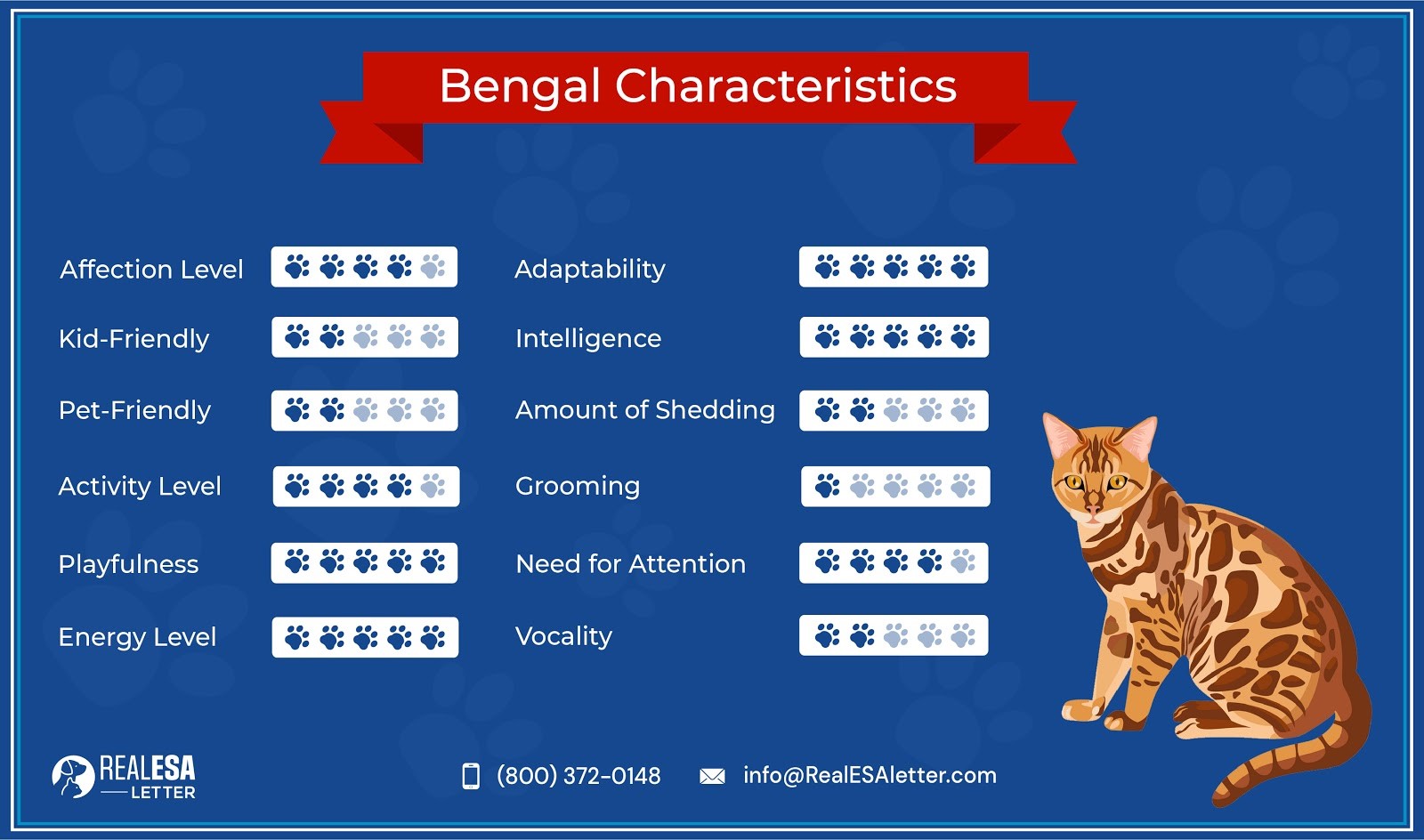
Bengal cats are known for their active and energetic temperament. They have a playful nature and are always on the move, exploring their surroundings with curiosity and enthusiasm. Bengals love to climb and jump, so it's important to provide them with plenty of vertical spaces, such as cat trees or shelves, to satisfy their natural instincts.
These cats are highly intelligent and enjoy interactive playtime. They love puzzle toys and games that challenge their problem-solving abilities. Bengals thrive on mental stimulation, so engaging them in activities that require them to think and strategize will keep them entertained and happy.
Despite their wild appearance, Bengal cats are generally affectionate and have a strong bond with their human companions. They often enjoy being involved in household activities and will follow their owners around the house. Bengals can be quite vocal and may use different sounds to communicate with their owners.
While they usually get along well with other pets when properly introduced, Bengals can be territorial at times. They may display some dominance behaviors towards other animals in the household, especially if they perceive them as a threat.
With early socialization, Bengal cats can adapt well to different environments and lifestyles. However, they do require a lot of attention and interaction from their owners. Neglecting their needs for mental stimulation and playtime can lead to boredom and destructive behavior.
In summary, Bengal cats have an active temperament but also possess an affectionate nature. With proper care, socialization, and ample opportunities for play, they make wonderful companions for individuals or families who can provide them with the attention they crave.
Caring for a Bengal cat: diet and exercise

When it comes to caring for a Bengal cat, providing the right diet and exercise is crucial to ensuring their overall well-being.
Diet plays a significant role in maintaining the health and vitality of Bengal cats. It is important to choose high-quality cat food that is specifically formulated for their nutritional needs. Look for options that contain a high percentage of animal-based protein, as Bengals are carnivores by nature. Avoid foods with fillers, additives, or excessive carbohydrates, as these can lead to weight gain and other health issues. It is also important to monitor their portion sizes to prevent overfeeding.
In terms of exercise, Bengals are an active breed that require plenty of physical activity to burn off energy and stay in good shape. Engage them in interactive play sessions using toys that simulate prey-like movements such as feathers or laser pointers. Consider incorporating puzzle toys or treat-dispensing toys to provide mental stimulation while they play.
Alongside physical exercise, Bengals also benefit from regular mental stimulation. Teach them new tricks or provide puzzle toys that challenge their problem-solving abilities. This not only keeps them mentally engaged but also helps prevent boredom-related behaviors.
Also remember to provide vertical spaces like cat trees or shelves for climbing and jumping, as this allows them to indulge their natural instincts.
Lastly, ensure Bengal cats have access to fresh water at all times and schedule regular veterinary check-ups to monitor their overall health and address any potential issues early on.
By providing a balanced diet, ample exercise, and mental stimulation, you can help your Bengal cat lead a happy and healthy life.
Training and socializing Bengal cats
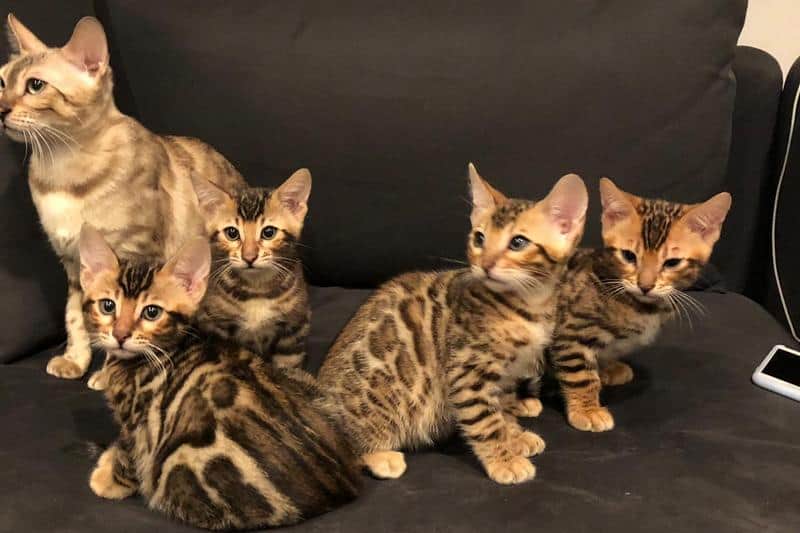
Training and socializing Bengal cats is an important aspect of their care and development. With their highly intelligent nature, Bengals are trainable and can learn various commands and tricks. Start training them at a young age to establish good behaviors and boundaries. Use positive reinforcement techniques, such as treats or praise, to encourage their learning.
Bengals are known for being social cats, but proper socialization from a young age is still essential. Introduce them to different people, environments, and animals gradually to prevent fear or aggression. Expose them to diverse stimuli so they become comfortable in various situations.
Interactive playtime is an excellent way to bond with your Bengal cat while also providing mental and physical stimulation. Use toys that allow them to engage in predatory behaviors, like chasing feathers or pouncing on moving objects. Regular play sessions will help curb their natural hunting instincts and keep them mentally stimulated.
Consider using puzzle toys or food-dispensing toys to provide additional mental stimulation during training and playtime. These activities challenge their problem-solving abilities and prevent boredom-related behaviors.
If you plan to introduce a new pet into your home, it's crucial to supervise the initial interactions between your Bengal cat and the newcomer. Gradual introductions with controlled environments can help ensure a smoother transition.
Remember that each Bengal cat has its own unique personality and may respond differently to training and socialization techniques. Be patient, consistent, and give them plenty of love and attention throughout the process.
Overall, training and socializing your Bengal cat not only enhances their well-being but also strengthens the bond you share with them.
Health concerns and common issues for Bengal cats
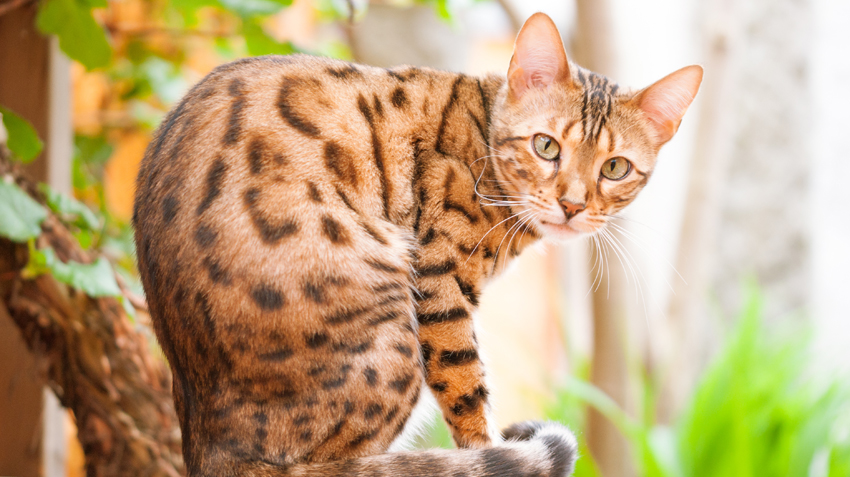
Bengal cats are generally healthy and robust, but, like any breed, they can be prone to certain health concerns. Here are some common issues that Bengal cat owners should be aware of:
- Hypertrophic Cardiomyopathy (HCM): This is a hereditary heart condition that affects the walls of the cat's heart chambers, making it difficult for them to pump blood effectively. Regular vet check-ups and screening tests can help detect HCM early on.
- Progressive Retinal Atrophy (PRA): PRA is an inherited eye condition that leads to progressive vision loss and can eventually lead to blindness. Responsible breeders will screen their breeding cats for PRA to minimize the risk.
- Flat-chested Kitten Syndrome (FCKS): This is a developmental condition where kittens have a flat chest shape instead of a normal rounded shape due to weak cartilage or muscle development. It can cause respiratory difficulties and requires immediate veterinary attention.
- Patellar Luxation: This occurs when the cat's kneecap dislocates or moves out of its normal position. It can cause lameness and discomfort, requiring medical intervention if severe.
- Renal Disease: Bengal cats, like many other breeds, can develop kidney disease as they age. Regular blood work and urine analysis are crucial for early detection and management.
To ensure the overall health and well-being of your Bengal cat, regular veterinary check-ups, proper nutrition, exercise, and vaccinations are essential. It's also important to choose a reputable breeder who conducts health testing on their breeding cats to minimize these potential health concerns.
Where to find Bengal cats and how to choose a reputable breeder

Bengal cats can be found through a variety of sources. One option is to search for reputable Bengal breeders in your area. You can start by checking with local cat clubs or organizations that specialize in the breed. These breeders should have a deep knowledge and understanding of the Bengal breed and prioritize the health and well-being of their cats.
Another option is to look for Bengal cats at animal shelters or rescue organizations. While it may be less common to find purebred Bengals in these environments, there are occasionally purebred or mixed Bengal cats looking for loving homes. Adopting from a shelter not only gives a deserving cat a second chance, but it also saves them from overcrowded conditions.
When choosing a breeder, it's crucial to do your research and ask important questions about their breeding practices. Reputable breeders will conduct health screenings on their breeding cats to minimize the risk of passing on hereditary diseases. They should also provide proper socialization and care for their kittens, ensuring they grow up in a healthy environment.
Visiting the breeder's facility is highly recommended. This allows you to observe how the cats are kept, ensuring they are clean, well-fed, and properly cared for. It also gives you an opportunity to interact with the breeder, asking questions about their breeding program and getting insights into their approach.
Remember, choosing a reputable breeder not only ensures you're getting a healthy Bengal cat but also supports responsible breeding practices that prioritize the well-being of these unique and beautiful felines.
Conclusion and final thoughts on the Bengal breed
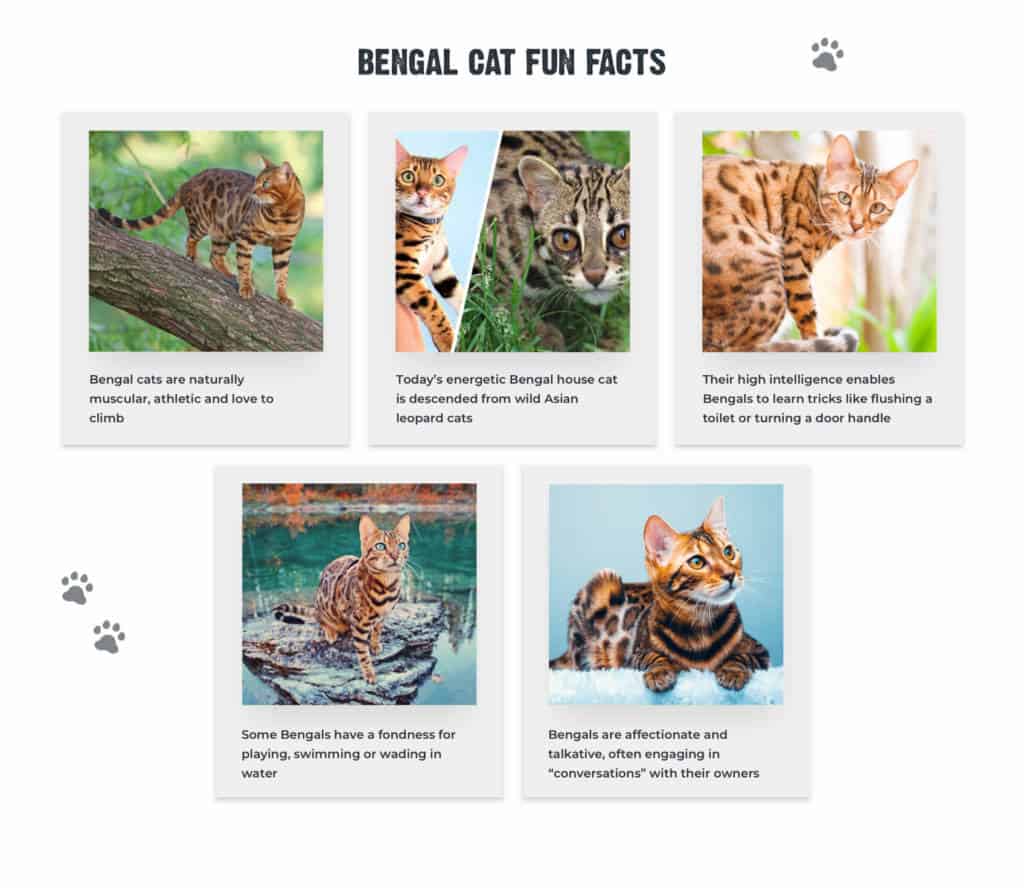
The Bengal breed has gained popularity in recent years due to its unique and wild appearance. These cats, with their distinctive patterns and muscular bodies, are truly a sight to behold. However, owning a Bengal cat is not for everyone.
Bengals require a lot of attention and stimulation. They are known for their high energy levels and need plenty of mental and physical exercise to keep them happy. This means providing them with toys, puzzles, and interactive play sessions. Additionally, Bengals have a strong prey drive and may exhibit hunting behaviors, so it's important to provide them with suitable outlets for these instincts.
While Bengals can be loving and affectionate companions, they may not be the best choice for households with young children or other pets. Their energetic nature can sometimes lead to rough play or territorial behavior.
When considering getting a Bengal cat, it is crucial to find a reputable breeder who prioritizes the well-being and health of their cats. Reputable breeders will conduct health screenings on their breeding cats and ensure that they are properly cared for.
In conclusion, Bengal cats are captivating creatures that require dedicated care and attention. If you have the time, resources, and experience to meet their unique needs, they can make wonderful pets. Remember to do thorough research before adopting or purchasing a Bengal cat, as it's essential to find the right fit for both you and the cat.




0 Comments